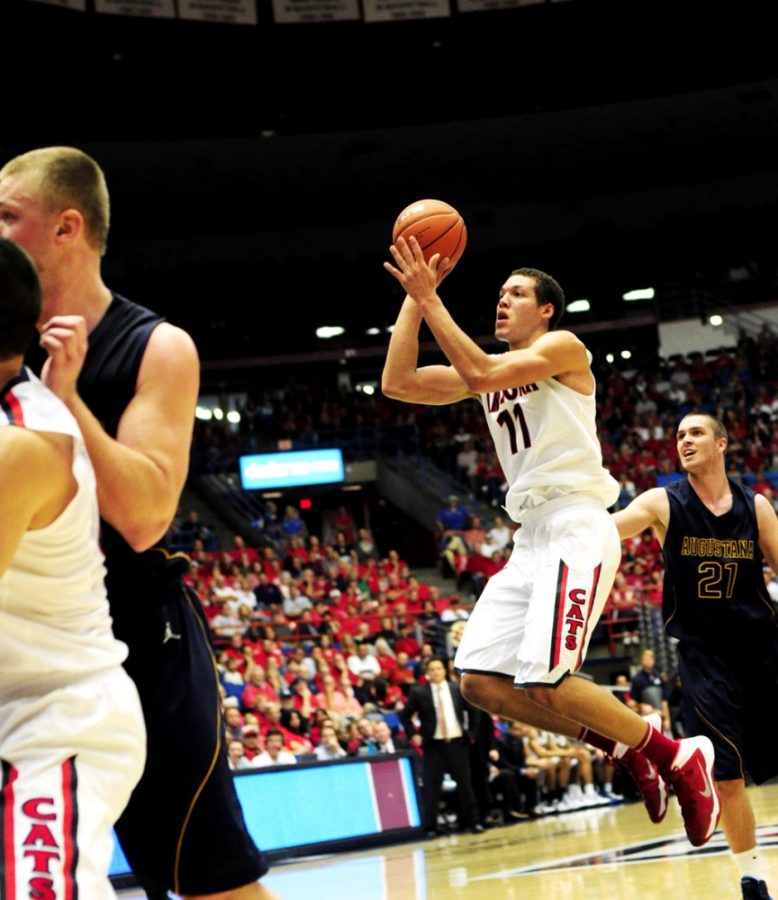Pro
The so called one-and-done rule is controversial, but beneficial to both the NBA and the NCAA.
According to the NBA Collective Bargaining Agreement, a U.S. player must be 19 years old and one year removed from high school to become eligible for the NBA draft. Essentially, high school players are forced to either attend college for a year or play in a professional league overseas instead of going straight to the NBA from high school.
The NBA is trying to ensure the league’s quality of play stays high and that these young players don’t ruin their careers by coming in too early. It’s just not easy to adjust to the physicality and speed of the NBA game. Imagine going from driving a minivan to a Ferrari — there’s bound to be one heck of a difference.
Those against the rule will list the success stories of several high school players who went directly to the NBA — such as LeBron James, Dwight Howard, Kevin Garnett and Kobe Bryant — but forget those who fail to make that transition.
There’s Kwame Brown, Eddy Curry, Sebastian Telfair and Gerald Green: players drafted in the first round of the NBA draft who have been ineffective as professionals and were simply not ready for the rigors of playing in the NBA.
These are players who could have had different career paths had they played college basketball to mature both physically and mentally. Not only would they have personally benefited, but the NCAA as a whole would have benefited from having these players generate a better quality of college basketball.
One phrase comes to mind when thinking of the one-and-done rule: If it ain’t broke, don’t fix it.
— Roberto Payne
— Follow Roberto Payne @RPsportreporter
Con
The NBA’s one-and-done rule, introduced under David Stern in 2006, remains one of the most controversial decisions in the history of the sport and has negatively affected both NCAA basketball and the players themselves.
Athletes now have to play professionally overseas, enter the NBA’s Developmental League or play NCAA basketball for one season before they can gain eligibility for the draft.
Last year, former Arizona Wildcat forward Grant Jerrett declared for the draft instead of competing for playing time, knowing that the arrival of five-star recruit forward Aaron Gordon would limit his minutes this year.
Jerrett became the UA’s second one-and-done in program history, the first since Jerryd Bayless in 2008.
This year, the Wildcats will start another projected one-and-done player in Gordon, who came to Arizona ranked as the No. 4 overall player in his class by ESPN. If Gordon moves on to the NBA after just one season as a Wildcat, he will be robbed of the benefits and process of maturation that come with the college experience.
Upon declaring for the draft, Jerrett was chosen by the Trail Blazers in the second round with the 40th pick and was immediately traded to the Oklahoma City Thunder. Rather than earning a guaranteed contract and roster spot at the Thunder’s training camp, Jerrett entered the D-League Draft and was selected No. 1 overall by the team’s D-League affiliate, the Tulsa 66ers.
Jerrett should have transferred to gain valuable life experiences.
The NBA does not provide monetary security if a player suffers a career-ending injury or if their career fails to take off. A college degree provides athletes who either are unable to continue playing or want to move on with more opportunities to find a good job and support themselves.
— Evan Rosenfeld
— Follow Evan Rosenfeld @EvanRosenfeld17









